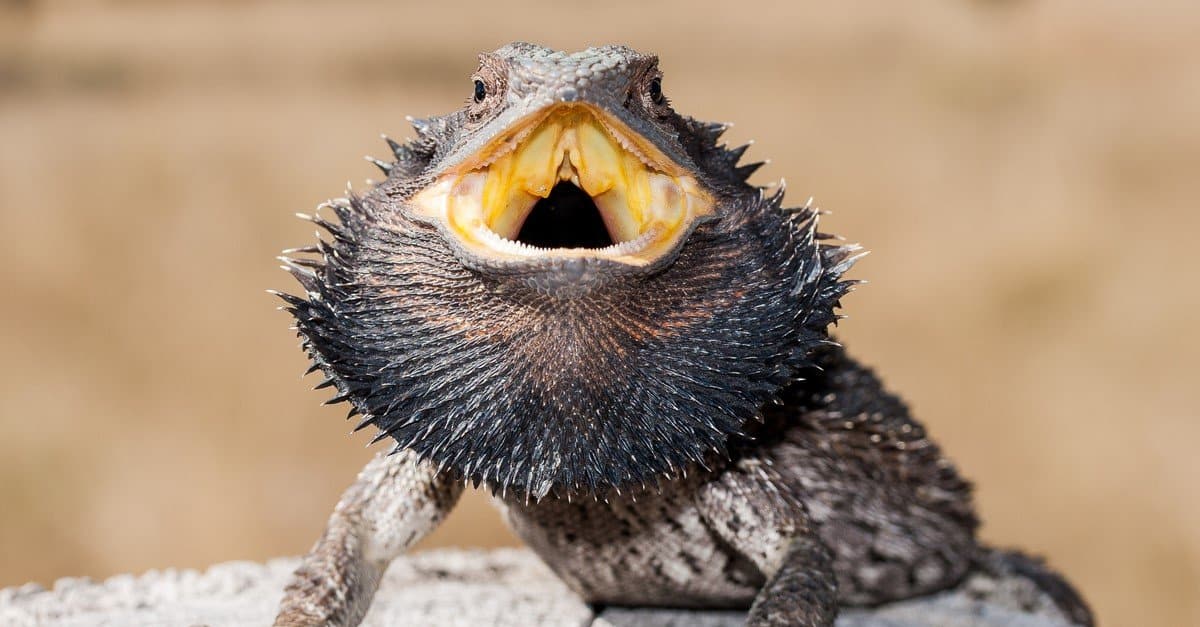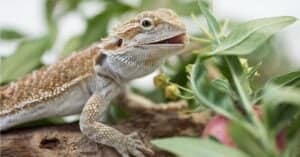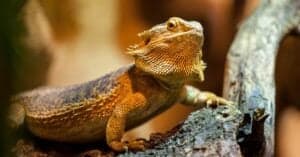Bearded dragons are curious reptiles with a unique look. Their friendly demeanor, spiky scales, and large round eyes make them an appealing pet to people of all ages. However, before committing to a new scaly pet, you must know everything about their behaviors and what they mean. Whether bearded dragons head bobbing, digging, opening their mouth, or waving, there is a reason for their behavior.
What does bearded dragon head bobbing mean? Let’s find out!
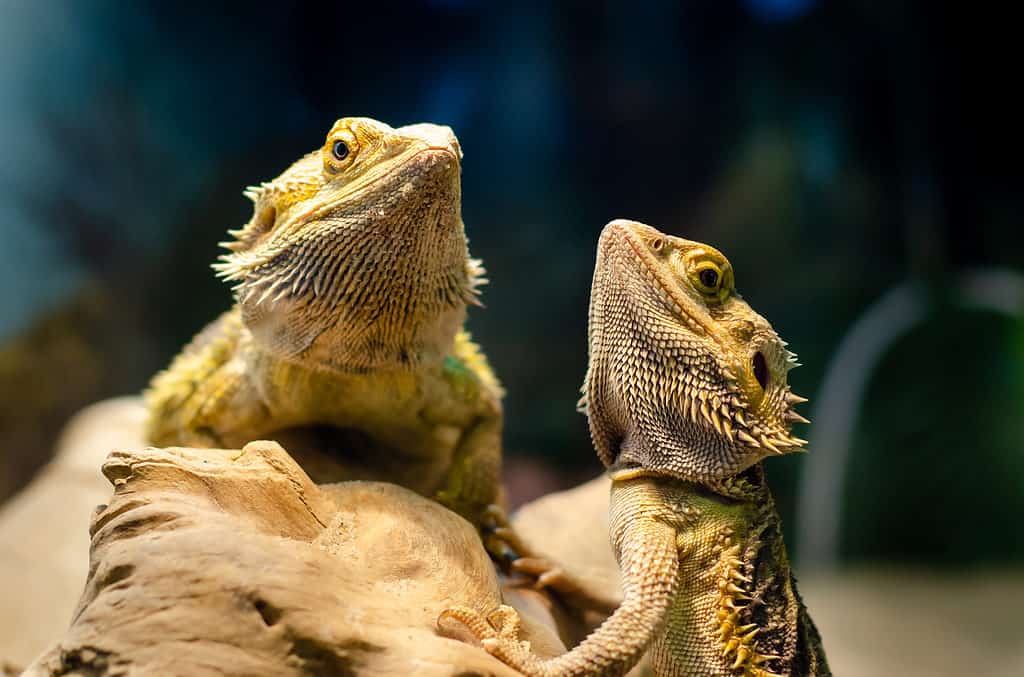
Bearded dragons bob their head out of curiosity at new people or objects.
©Lutsenko_Oleksandr/Shutterstock.com
Why is My Bearded Dragon Bobbing its Head?
Bearded dragons bob their head for various reasons, including to attract a mate, defend their territory, show submission, feel threatened, or have an underlying health condition. When beaded dragons bob their head, it’s not always a reason to be concerned. However, if they do it regularly, it could be more serious and require investigation.
Bearded dragons are intriguing creatures and sometimes head bob when curious about something or someone. They are communicating how they feel with a physical action.
1. Bearded Dragons Head Bob When Trying to Mate
Most animals have a way to communicate using their physical appearance and behaviors to show they are ready to mate. For example, a peacock has a flashy display of his colorful train to get the attention of a female. This is no exception to bearded dragons.
Male bearded dragons use head bobbing as a mating ritual to indicate they are ready to mate. You might see your bearded dragon turning its beard black to draw the attention of females. Female bearded dragons also bob their heads, only at a slower rate. These slow head-bobbing motions and arm waving let the male know she is willing to mate.
Bearded dragons can be aggressive toward females, so keeping them separated is important unless they’re mating.
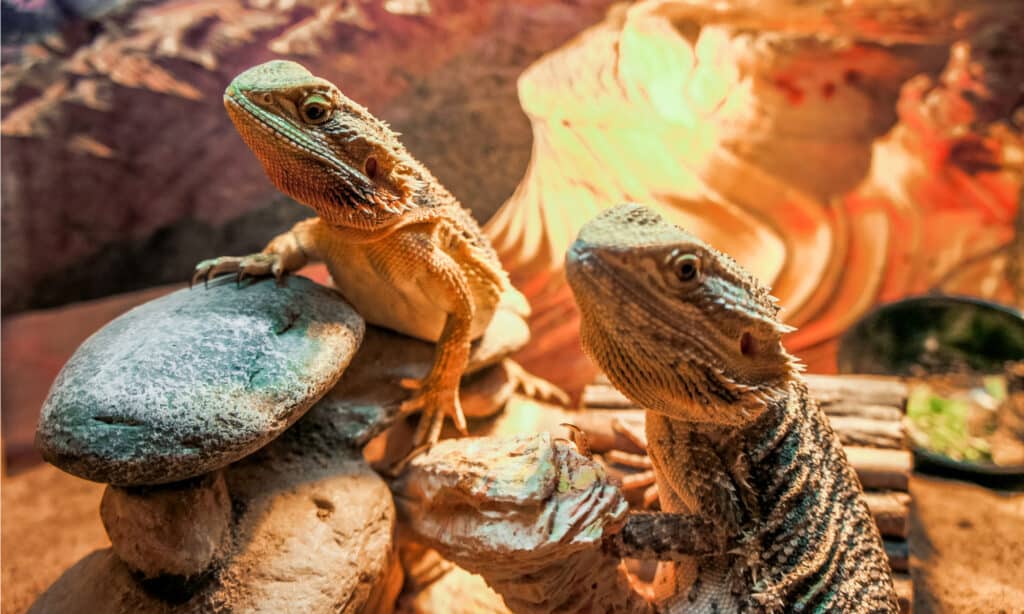
Bearded dragons will bob their head when they feel threatened, show submission, or try to mate.
©Steve Buchus/Shutterstock.com
2. Bearded Dragons Head Bob When Protecting Their Territory
Head bobbing is a common sign that your bearded dragon is territorial. Male bearded dragons want to show how big and powerful they are to other males to assert their dominance and protect their territory. When bearded dragons feel threatened, they bob their heads fast and put on a showy display to intimidate their rivals.
In addition to head bobbing, these reptiles will open their mouths, hiss, and reveal their beards to deter the perceived threat. They will also flatten their bodies to make themselves look bigger than they are and may even bite should they feel threatened.

Bearded dragons have triangular heads and a throat pouch, which they puff out when threatened.
©Zhitkov Boris/Shutterstock.com
3. Bearded Dragons Head Bob to Show Submission
In reverse to displaying aggressive behavior, bearded dragons bob their head when showing submission. However, they will head bob slower. For example, if a larger bearded dragon puts on a territorial display, the younger and smaller beardie will wave its arm and slowly bob its head in submission. For this reason, having two bearded dragons in a tank could cause stress and territorial behavior that could put one at risk over the other.
Slow head bobbing is also common in young beardies. When they are tired and ready to fall asleep, or when you have introduced a young dragon to a new tank, they will slowly bob their head. They stop head bobbing when they feel safe and comfortable. So, ensure your bearded dragons have all the food, water, and comforts to help them adjust.
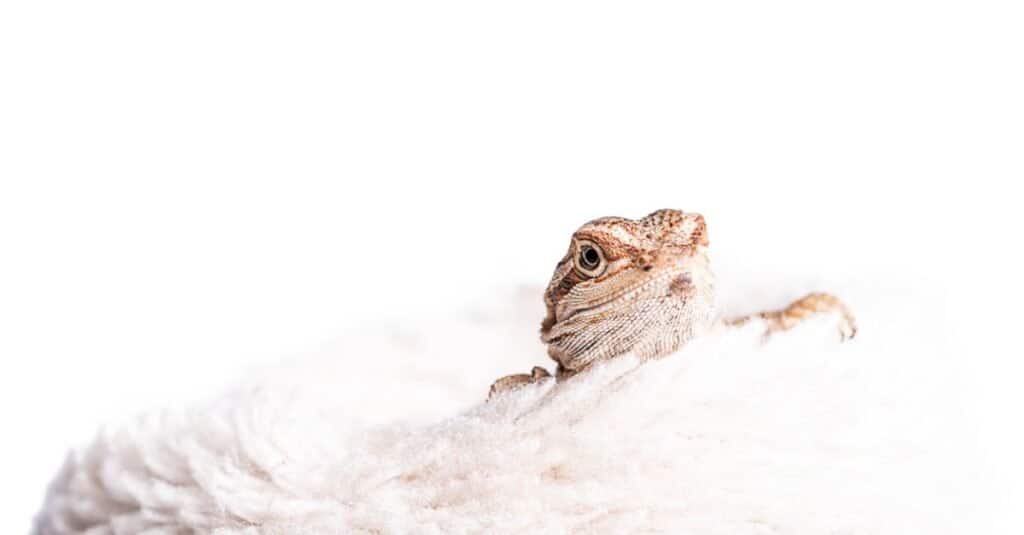
Young bearded dragons will slowly bob their head and wave when showing submission.
©iStock.com/Kaan Sezer
4. Bearded Dragons Head Bob When Seeing Another Animal or Human
Beardies are curious reptiles and bob their heads at objects and people they want to learn more about. If you notice your bearded dragon bobbing its head at you, they are investigating who you are and what you’re doing or attempting to communicate with you. There are several reasons why bearded dragons are head bobbing at you, including:
- They consider themselves the dominant creature over you.
- They consider you the dominant creature and submit to you.
- They may be communicating that they are stressed.
- They may be communicating that they are comfortable.
Bearded dragons may also bob their head when you add a new object to their environment. After investigating the object, the head bobbing should stop.
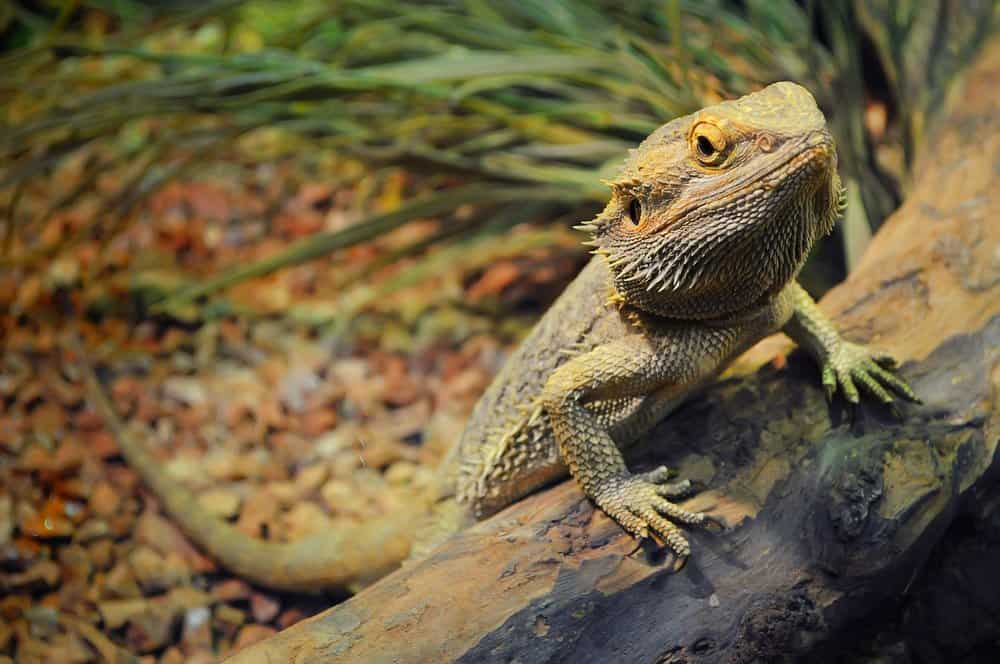
Bearded dragons bob their head out of curiosity at new people or objects.
©Shinedawn/Shutterstock.com
5. Bearded Dragon Head Bob When They Have an Underlying Health Condition
While bearded dragon behaviors are vast, head bobbing is all too common. However, should they head bob regularly, it is important to seek advice from your local vet. There may be underlying health conditions causing these behaviors, or they may feel stressed in their environment. For example, metabolic bone disease, parasites, or respiratory infections can cause head bobbing or jerking.
If you notice your bearded dragon appears stressed, place it in a quiet and comfortable place to calm it down and see if the head bobbing subsides. Consult your reptile veterinarian for more information.

If your bearded dragon bobs its head continuously, you may have to consult a reptile veterinarian.
©iStock.com/Kukurund
Why Is My Bearded Dragon Glass Surfing and Head Bobbing?
Breaded dragons may glass surf, but this is not natural behavior and often means they are stressed. If they are glass surfing and head bobbing, they are likely communicating a need to you.
Some of these reasons include the following.
- Seeking attention or stimuli.
- The enclosure is too small.
- Trying to get away from another beardie.
- The enclosure is too hot or too cold.
Thank you for reading! Have some feedback for us? Contact the AZ Animals editorial team.

